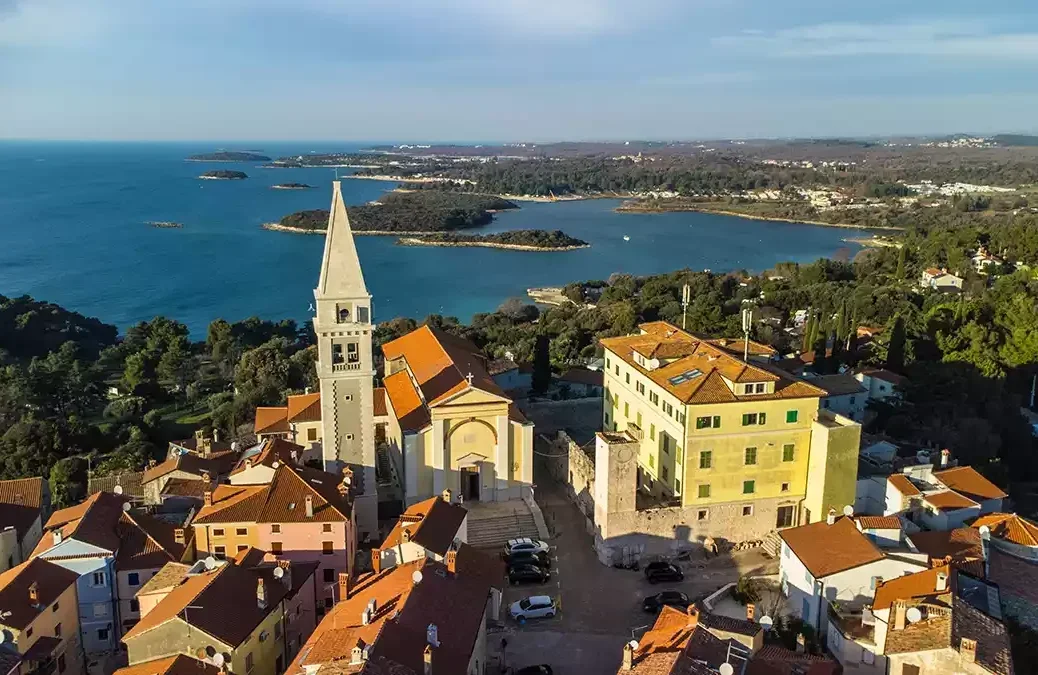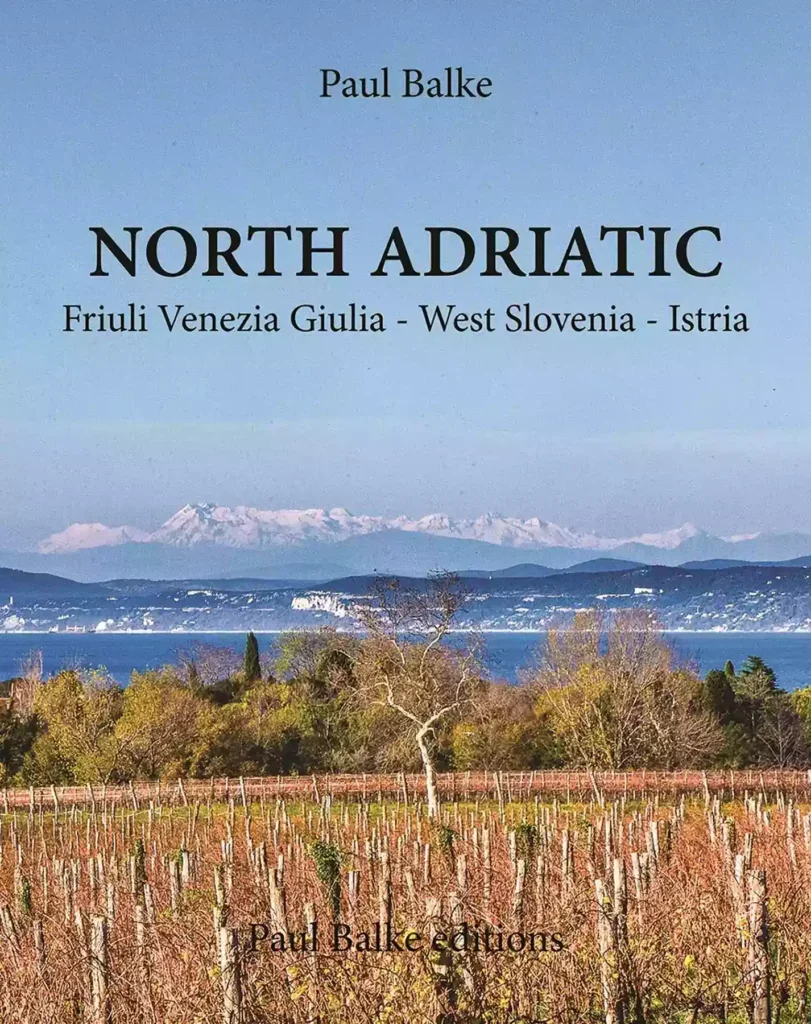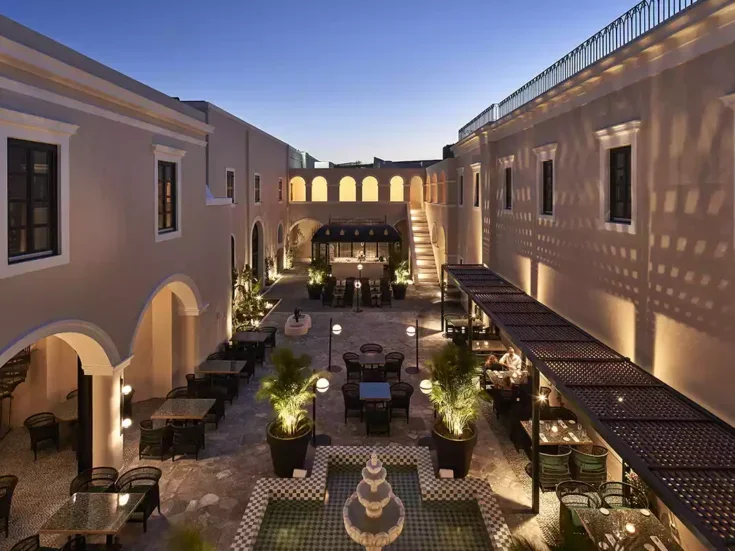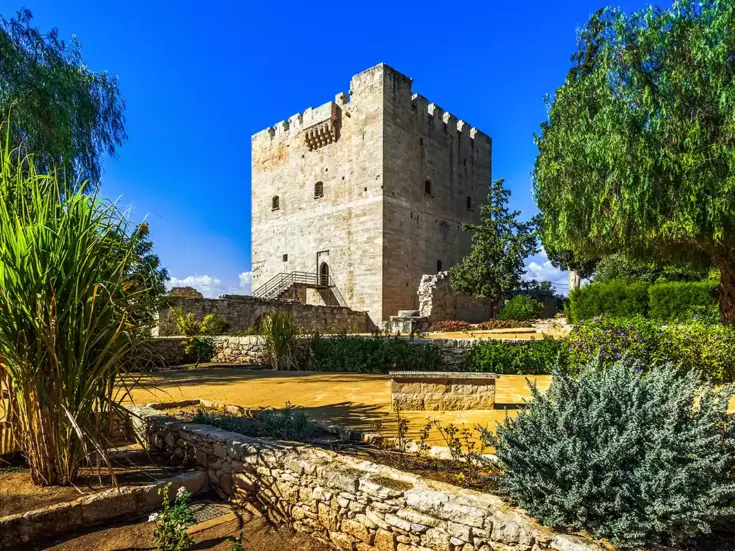
Caroline Gilby MW reviews North Adriatic: Friuli Venezia Giulia – West Slovenia – Istria – Kvarner by Paul Balke.
A winemaker friend in Istria once explained to me that his family had lived in the same house for the past two centuries, but the past four generations had had different passports. Ever since then, I’ve been fascinated about how ethnic and regional identity can become so important in the face of changing political identity—and nowhere is this writ larger than around the northern and northwestern edges of the Adriatic Sea. The premise of Paul Balke’s book North Adriatic is to create a geographical, linking theme for an area that he sees as a single but divided region, shaped by a complex and sometimes brutal history.
Netherlands-born Balke has a passion not only for wine but for the cultural and historical richness within which wine has always been created, and he has traveled extensively around the North Adriatic region to write this book. Most wine books take a strict, by-country view of describing wine, but Balke takes a cross-border approach in this large-format, generously illustrated book, described as a wine and travel atlas. He covers the Italian region of Friuli Venezia Giulia, as well as Western Slovenia, Istria, and Kvarner. Istria, in particular, exemplifies the impact of politics over geography, since the peninsula is divided across three countries: 90% of Istria is in Croatia, with nearly 10% in Slovenia, and a tiny part in Italy, while Kvarner is wholly in Croatia today. These are regions closely linked through historical and cultural ties but divided by changing national borders. The book covers the complex and intricate stories of these four neighboring regions, weaving together their shared histories and highlighting their differences. Most recently, and within living memory, the aftermath of World War II brought a painful division between Italy and Yugoslavia that often separated families and friends, never mind vineyards and wineries. Vines as well as people have had their roots in several countries without moving.
Balke states, “The complexity of the region is a consequence of its history. It means the region can only be understood by taking its history into consideration.” He takes a deep dive into the history of the region, touching on the Palaeolithic era but then delivers more detail from the Roman Empire onward. He takes us through waves of invasion and influence by Slavic and Eastern tribes, the Germanic Longobards, the Venetians, Habsburgs, Napoleon, Reformation merchants, Austro-Hungarians, Italians, and then into modern history, with the cruel impact of two world wars. Balke describes the World War I memorial in Oslavia that bears witness to this, honoring 57,000 war dead. Unexploded wartime munitions are still a hazard for planting new vines in Western Slovenia close to the border. After World War II, the north Adriatic region was divided between Yugoslavia and Italy, and it wasn’t until 1991 that independence finally arrived for Croatia and Slovenia.
As one significant example, Balke analyzes the dramatic effect of imposed political division on Brda and Collio (in Slovenia and Italy respectively). He explains that this had been one region for hundreds of years, with names meaning “hills” in both languages. As a region, its growers self-organized as early as 1872, an echo of today’s current cross-border initiatives. Around this time, a committee of Austrian experts concluded that wines from Collio were the best in the Habsburg monarchy. Tragically, much of this quality was lost after 1915, when young men had to choose sides in the destructive battles of World War I. It became two regions in 1947, dividing vineyards and estates, as well as friends and family, 40% going to Italy, with its burgeoning capitalist freedoms, and the rest left behind in the poorer rural economy of Socialist Yugoslavia.
North Adriatic: The human factor in terroir
Most writers and communicators on wine today recognize the concept of terroir as an important basis for quality and building the connection between wine and its place of origin. Terroir is often defined as being linked to soil, climate, rainfall, wind, and physical features such as aspect and altitude. Increasingly, however, the human factor in terroir is coming to the fore—the people who produce the wine, the cultural influences that have shaped them, and thus the grape varieties they choose and the wines they make. This is a key factor behind some of the similarities but also differences across this region: Istria with its own Malvazija Istarska and Teran; Western Slovenia (especially Brda) with Rebula; Malvazija and Refošk in Slovenian Istria and the Karst; Zelen and Pinela in Vipava Valley. Each of the Italian subregions has its own preferred grape varieties, too, with Friulano, Refosco dal Peduncolo Rosso, Verduzzo, and Schiopettino the most important of the local varieties, though there are many more. Balke takes a uniting, transnational view at first, rather than the reductionist approach more common in wine books, but then he deep-dives into details of exactly what is grown where, with a brief overview (sometimes frustratingly brief) of wine style and quality. The sections on grape varieties are thorough but often miss some technical detail. He leaves open the question of why some varieties have survived and others have disappeared, which would have been of interest.
Balke is clearly deeply passionate about the region and also offers plenty of detail about its food, along with images of leading chefs and their dishes—important, because fine wine flourishes with the support of high-quality food that expresses the best of local ingredients. The boxes describing points of interest and historical monuments—the product of a huge amount of research—are also helpful for potential travelers. Occasional maps and timelines are particularly useful to clarify the sometimes-confusing detail, though strangely the first map does not appear until page 61; a full map of the region, with current country boundaries, would have been useful at the start. There are detailed guides to grape varieties and a simple description of wine styles produced in every region, along with coverage of soils, landscape, and climate. There are, of course, different mesoclimates, but the overarching feature is that this is a region where an alpine climate meets Mediterranean influences. This brings notable winds, including the bora (or burja in Slovenian), which is famous for blowing cars off the road in Vipava Valley, and the milder maestrale from the Adriatic Sea.

Fascinating and inspirational
This book is impressive in many ways, above all for its detailed research, and I enjoyed the side-stories that add color—such as Trieste as the capital of coffee; the origins of Prosecco from a village of the same name (first mentioned in writing in 1593); and the history of the Lipica stud founded in 1580 by the Habsburg emperor and still breeding Lipizzaner horses today. But I have a few criticisms, too. A good native-English-speaking editor would have dealt with numerous spelling and grammatical errors in the text and been able to remove sometimes repetitive detail that interrupts the flow of the narrative. Given that several leading chefs are covered in detail and that this is billed as a wine and travel atlas, it seems strange that there is almost no mention of any winemakers by name. Grape varieties are covered in a fair level of detail, but an opportunity was missed in not covering the influential and pioneering winemakers who have done so much over the past few decades to revitalize wine in all three countries. Many deserve a mention, not least because there aren’t many places English speakers can read about their wine stories. Having said that, it’s good that Balke has not fallen into the trap of reviewing specific wines, since these go out of date very quickly in a rapidly evolving area like this. A brief guide to such wineries and an overview of their quality, perhaps with an indication of the producers that are open to visitors, might have made this even more useful as a wine guide. I am, therefore, left with the feeling that this book is missing the opportunity to be truly a wine atlas.
Balke states in his introduction, “It is my mission to show the beauty of the north Adriatic through its wines and territory and to offer a clear view on what is one of the most versatile and fascinating wine regions of the world.” Despite its flaws, this is an important reference work that brings welcome attention to a dynamic and exciting part of the wine world that deserves more recognition.
Balke offers an admirable depth of research, especially into the history, landscape, and cultural background of the region. His book also gives thoughtful insights into how political borders interrupt identity. I found much of this work fascinating and an inspiration to explore further, heightening the passion I share with Balke for telling the intricate stories of this sometimes-underrated wine region.
North Adriatic: Friuli Venezia Giulia – West Slovenia – Istria – Kvarner
by Paul Balke
Published by Paul Balke Editions, available via paulbalke.com; 256 pages; €50







